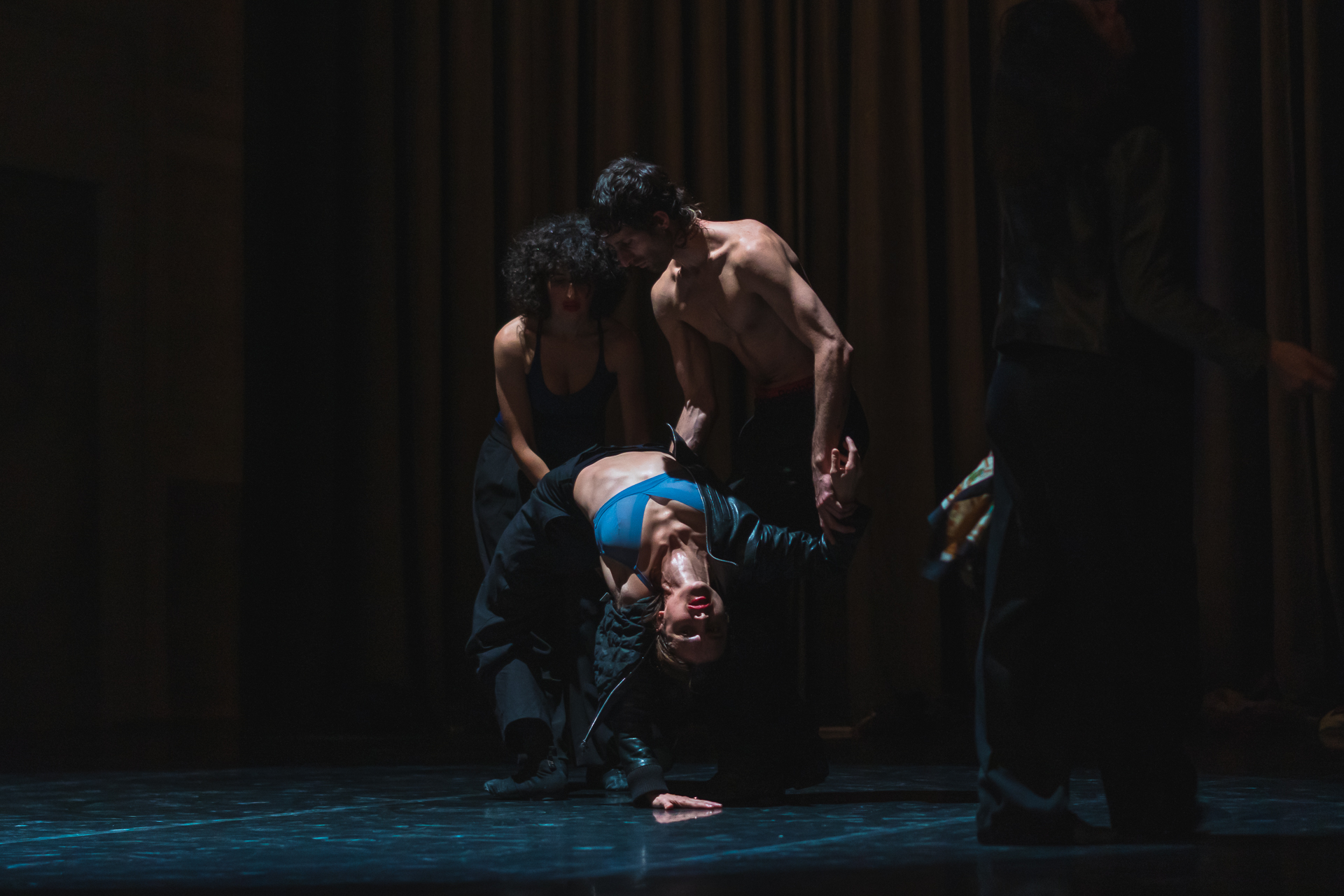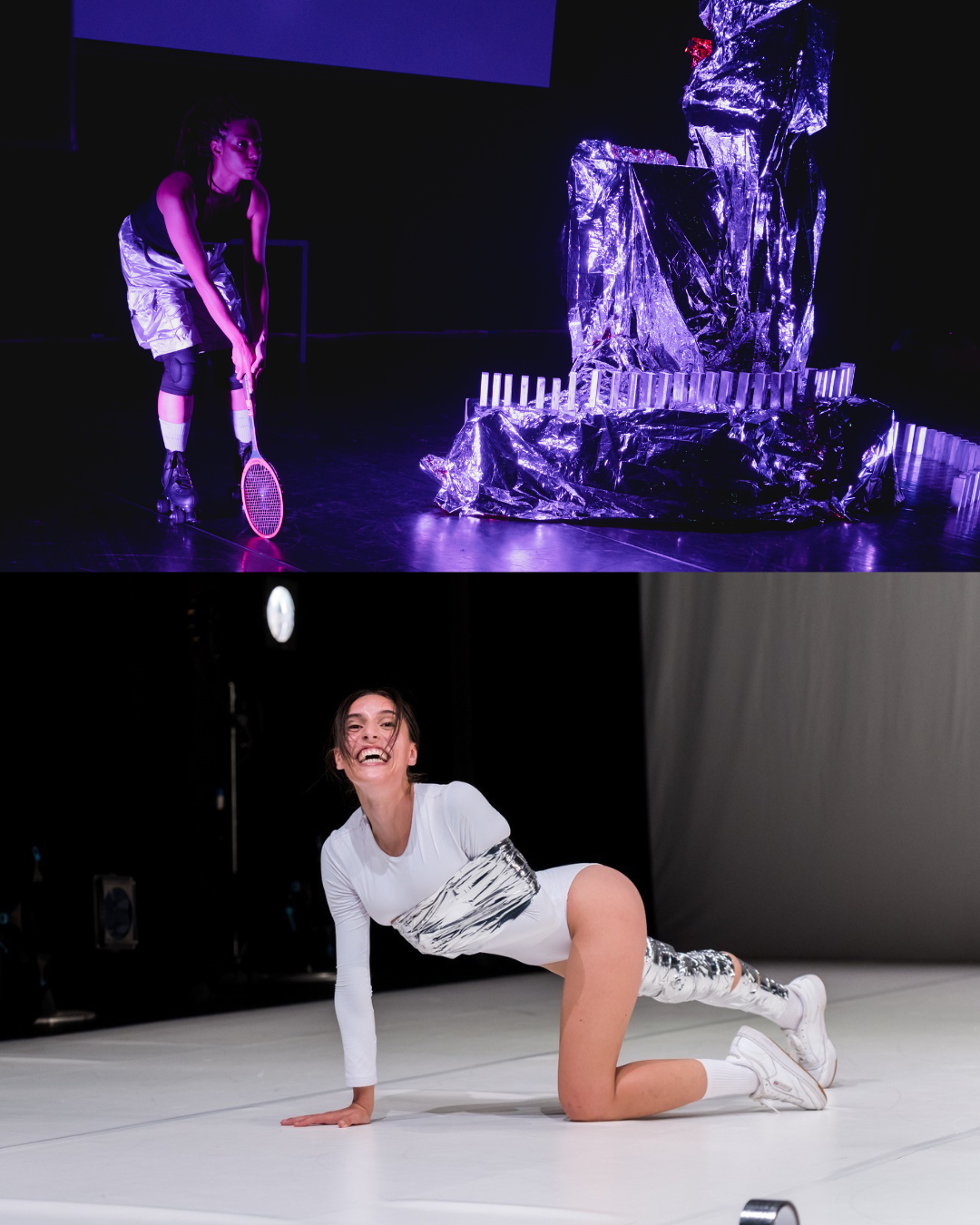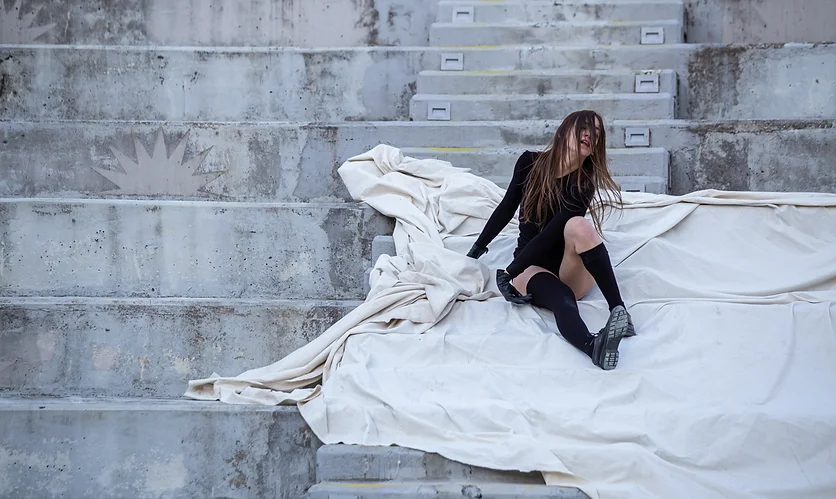25 - 30 March
10:00 am - 6:00 pm
MONUMENTUM, THE SECOND SLEEP / SECONDA PARTE, IL QUARTETTO | Bando AiR

Location
- Lavanderia a Vapore
Calendar
About
Networks
Venue Hire
Blog
News






“As a performer, I’ve crossed over into various choreographic languages. They focus with precision on the notions of experience and embodiment. Oona Doherty teaches me that emotional frequencies gives form already. Benjamin Kahn teaches me to approach metamorphosis as both an inner physical state and a concrete action. I experience the solo as a quasi-initiatory journey, with the awareness of being in a performative situation. It raises the issue of the audience’s view of what it sees, and the performer’s perspective on their own action. By celebrating the interweaving of practices and exchanges between cultures, Nach introduces me to an eloquent, epic body, a resolutely erotic and sensory relationship to experience.” (Sati Veyrunes – RememberCompany)

ph_Andrea Macchia, graphic_Luca Bogoni

ph_Andrea Macchia, graphic_Luca Bogoni

ph. Ilaria Costanzo, festival Contemporanea, Prato 2022



Our body is not the problem, nor our physical, motor, sensory, neurological, cognitive abilities. We can no longer accept that our bodies, our histories, our changing identities are reported and flattened under a single convenient medical-scientific term. We are not talking about disabilities, but about Disabling Experiences imposed by a society built on a model that only benefits the western, male, white, able, healthy, cisgender and straight human being. (Al.Di.Qua. Artists, Manifesto)
What do I need to be comfortable here? Through physical and writing practices, the workshop unfolds the theme of need as a place where to meet ourselves and others. Listening, silence, looking, dialogue in an intimate and collective space will be tools to let our needs emerge and position in the space: we are going to formulate a group access agreement that can accompany us during Carte Blanche.
Through visual perception, the workshop allows a reflection on the use of the eyes, facial expressions and hands. This will increase our awareness of the many possibilities of expression in many areas: from everyday life, to sign language, art, theatre and much more.
This workshop explores the importance of accessibility in cultural venues such as festivals, theatre performances and other events. In particular, it focuses on the relationship between accessibility, times, spaces and communication and how these factors can affect the ability of neurodivergent people with chronic illnesses and/or disabilities to fully participate in cultural experiences.
The workshop shares the encounter between the performance work curated by Marta Olivieri and the audio-description practices created by Camilla Guarino and Giuseppe Comuniello. The collaboration between the three authors generated an interest in the multiplication of perception. Within the workshop, they will bring a practical introduction of the work done during the residence for the creation of Trespass_ Tales of the Unexpected.
Through visual perception, the workshop allows a reflection on the use of the eyes, facial expressions and hands. This will increase our awareness of the many possibilities of expression in many areas: from everyday life, to sign language, art, theatre and much more.
The workshop shares the encounter between the performance work curated by Marta Olivieri and the audio-description practices created by Camilla Guarino and Giuseppe Comuniello. The collaboration between the three authors has generated an interest in the multiplication of perception. Within the workshop they will bring a practical introduction of the work done during the residency for the creation of Trespass_ Tales of the Unexpected.
This workshop explore the importance of accessibility in cultural venues such as festivals, theatre performances and other events. In particular, it focuses on the relationship between accessibility, times, spaces and communication and how these factors can affect the ability of neurodivergent people with chronic illnesses and/or disabilities to fully participate in cultural experiences.
Lavanderia a Vapore
We firmly believe that the internet should be available and accessible to anyone, and are committed to providing a website that is accessible to the widest possible audience, regardless of circumstance and ability.
To fulfill this, we aim to adhere as strictly as possible to the World Wide Web Consortium’s (W3C) Web Content Accessibility Guidelines 2.1 (WCAG 2.1) at the AA level. These guidelines explain how to make web content accessible to people with a wide array of disabilities. Complying with those guidelines helps us ensure that the website is accessible to all people: blind people, people with motor impairments, visual impairment, cognitive disabilities, and more.
This website utilizes various technologies that are meant to make it as accessible as possible at all times. We utilize an accessibility interface that allows persons with specific disabilities to adjust the website’s UI (user interface) and design it to their personal needs.
Additionally, the website utilizes an AI-based application that runs in the background and optimizes its accessibility level constantly. This application remediates the website’s HTML, adapts Its functionality and behavior for screen-readers used by the blind users, and for keyboard functions used by individuals with motor impairments.
If you’ve found a malfunction or have ideas for improvement, we’ll be happy to hear from you. You can reach out to the website’s operators by using the following email
Our website implements the ARIA attributes (Accessible Rich Internet Applications) technique, alongside various different behavioral changes, to ensure blind users visiting with screen-readers are able to read, comprehend, and enjoy the website’s functions. As soon as a user with a screen-reader enters your site, they immediately receive a prompt to enter the Screen-Reader Profile so they can browse and operate your site effectively. Here’s how our website covers some of the most important screen-reader requirements, alongside console screenshots of code examples:
Screen-reader optimization: we run a background process that learns the website’s components from top to bottom, to ensure ongoing compliance even when updating the website. In this process, we provide screen-readers with meaningful data using the ARIA set of attributes. For example, we provide accurate form labels; descriptions for actionable icons (social media icons, search icons, cart icons, etc.); validation guidance for form inputs; element roles such as buttons, menus, modal dialogues (popups), and others. Additionally, the background process scans all the website’s images and provides an accurate and meaningful image-object-recognition-based description as an ALT (alternate text) tag for images that are not described. It will also extract texts that are embedded within the image, using an OCR (optical character recognition) technology. To turn on screen-reader adjustments at any time, users need only to press the Alt+1 keyboard combination. Screen-reader users also get automatic announcements to turn the Screen-reader mode on as soon as they enter the website.
These adjustments are compatible with all popular screen readers, including JAWS and NVDA.
Keyboard navigation optimization: The background process also adjusts the website’s HTML, and adds various behaviors using JavaScript code to make the website operable by the keyboard. This includes the ability to navigate the website using the Tab and Shift+Tab keys, operate dropdowns with the arrow keys, close them with Esc, trigger buttons and links using the Enter key, navigate between radio and checkbox elements using the arrow keys, and fill them in with the Spacebar or Enter key.Additionally, keyboard users will find quick-navigation and content-skip menus, available at any time by clicking Alt+1, or as the first elements of the site while navigating with the keyboard. The background process also handles triggered popups by moving the keyboard focus towards them as soon as they appear, and not allow the focus drift outside it.
Users can also use shortcuts such as “M” (menus), “H” (headings), “F” (forms), “B” (buttons), and “G” (graphics) to jump to specific elements.
We aim to support the widest array of browsers and assistive technologies as possible, so our users can choose the best fitting tools for them, with as few limitations as possible. Therefore, we have worked very hard to be able to support all major systems that comprise over 95% of the user market share including Google Chrome, Mozilla Firefox, Apple Safari, Opera and Microsoft Edge, JAWS and NVDA (screen readers).
Despite our very best efforts to allow anybody to adjust the website to their needs. There may still be pages or sections that are not fully accessible, are in the process of becoming accessible, or are lacking an adequate technological solution to make them accessible. Still, we are continually improving our accessibility, adding, updating and improving its options and features, and developing and adopting new technologies. All this is meant to reach the optimal level of accessibility, following technological advancements. For any assistance, please reach out to
